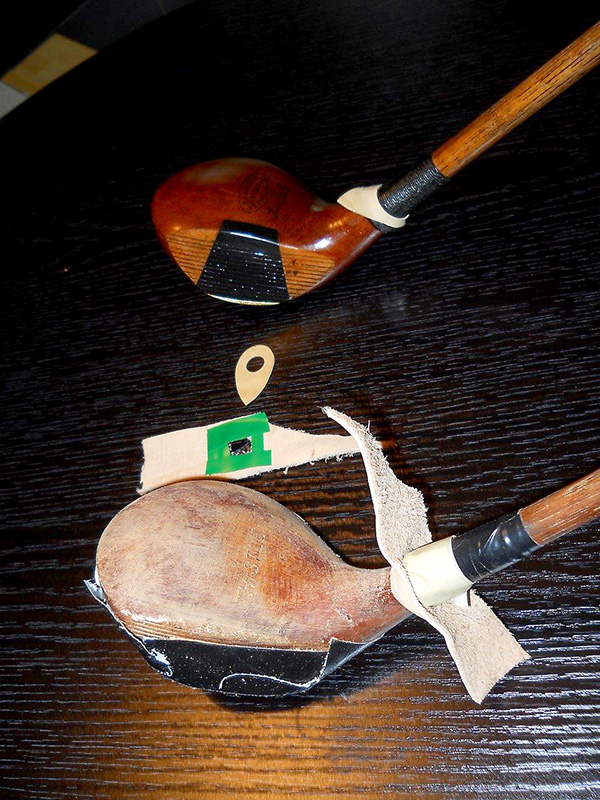By Howard Vogel
In the category of “shop notes” I, sort of, replaced an old Golfsmith tool with a very common shop remnant.
Back in the “good-ole golden days” I attended a Golfsmith club repair class. We were working on persimmon heads back then, not realizing that some of the skill sets we used would transfer over later in life to wood shafts, and wood heads.
At that time, when clubs were dipped in poly for the final coat, a little asymmetrical rubber ring was used to push up the neck of the club and trap all the drippings that ran off the clubhead. These little devices were called “whitty -dippers.” A catchy little name. Just a little device that you wouldn’t think much about until you have to live without it.
I haven’t seen a lot of things in our catalogues that we used to take for granted, so we learn to improvise and move forward.
In an effort to use up every possible leftover scrap in the shop, I started taking the “leather tails” that were leftover from making grips and, by putting a little cross slice in them, could get them to serve as well as the old whitty dipper. These leather tails are plentiful. I started to call them “deerskin dippers.”
I also remember that when poly dries on the bottom of the club, a little residue remains, like a little “blister” on the bottom of the club. I recall the guys would continually dab at that poly drip with a cloth or napkin, until little or none of it remained. That was back in the day of longer attention spans.
You would think you could just let it dry and then hit it with fine steel wool. Not so, you find yourself stuck in a never ending spiral of refinishing. As we all get very adept at manipulating a single razor blade, I found that if the poly was hard enough, you could just delicately remove the poly blister by scraping and leave a smooth surface. Done, done, and done.
If you have to be perfect to sleep at night, you could put a little whiff of poly on the place where the blister used to be.
All these seemingly ultra-micro details take on measure, when they impede you from your ultimate goal. Less time sanding, could be more time actually playing.

The nicely finished club, shows a whitty dipper in place. The whitty dipper is the asymmetrical rubber band that slips over the butt of the club. You push it up to the neck and because it’s pliant, it cleaves to the neck.
My imitation made out of grip scraps doesn’t expand, so I make the slit, slide it on, and sort of lodge it in place with tape.
The leather stays in place until you are done dipping. The whitty protects the whipping from taking on any poly. It also protects the entire club from poly dripping down the shaft.
If you have a bare neck – meaning no whipping – you can put tape on the slit; slide it on the neck, and friction from the tape will hold it in place.
The black tape makes the slit expandable, the green tape was meant to look like a finished product. I figured everyone could make one of these.
They are handy and I do like using, re-using, or re-purposing every thing I can in the shop. Sustainable, right?
You would be surprised how many things you can recycle. For example, waxed-surface shipping boxes can be cut up and used for epoxy boards. I have also been cutting them into strips and placing them on the bench. When they are sufficiently full of grit, glue, and grime, I pull them up replace them. This is not a big deal, but in a small space you have to get “micro,” as it were, to keep it from getting too overwhelming.
We also figured out a more efficient way to straighten shafts using Patrick Kennedy’s cam-based gizmo. But that’s another conversation, albeit an important one, because it seems that finding viable replacement shafts is getting more and more difficult. I am actually to the point of buying clubs specifically because they have warped shafts. They are economical to buy, and if the wood is still strong, can be straightened, they have the all-important vintage pedigree, and most likely were made to specs that we cannot duplicate. This is much easier than buying a new replacement shaft and trying to make it old.
Happy trails.
Howard
